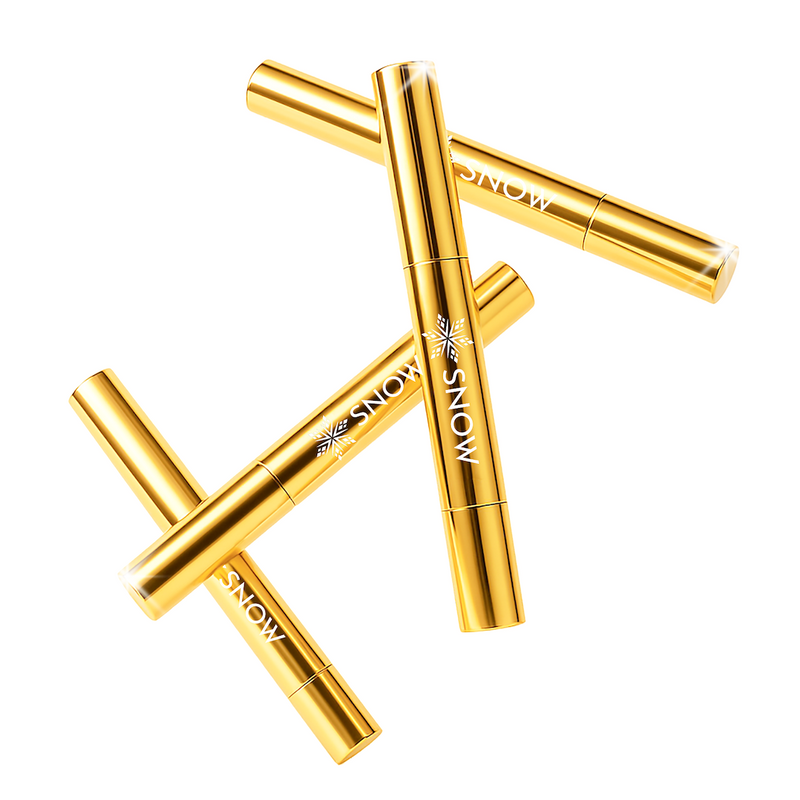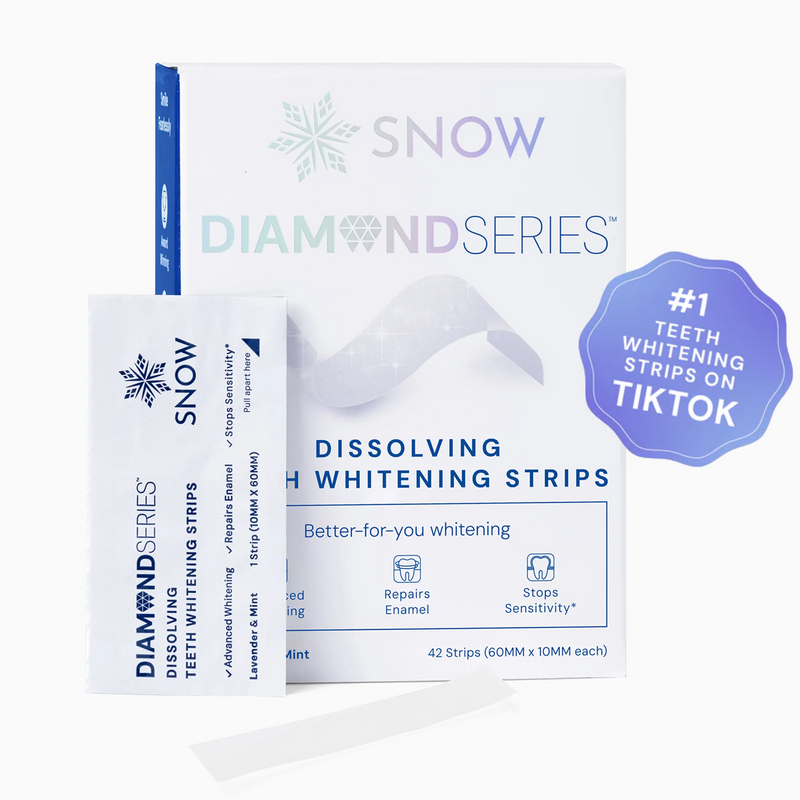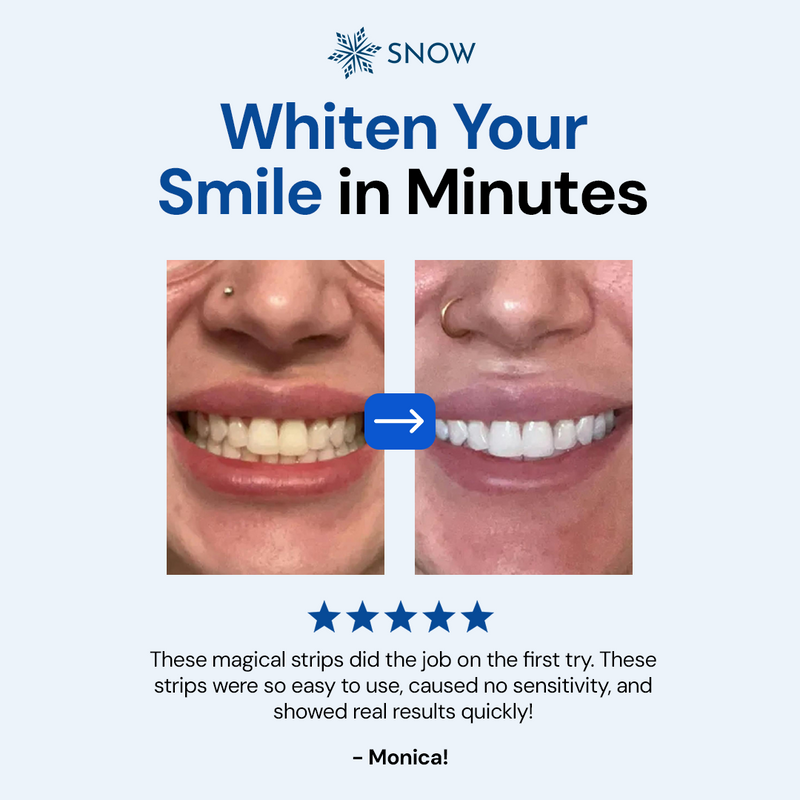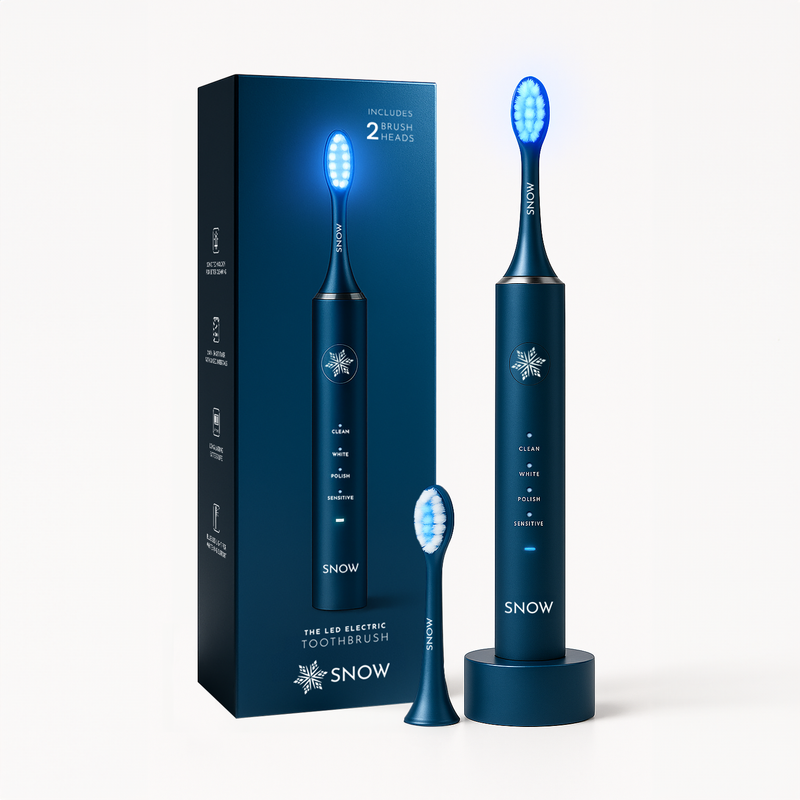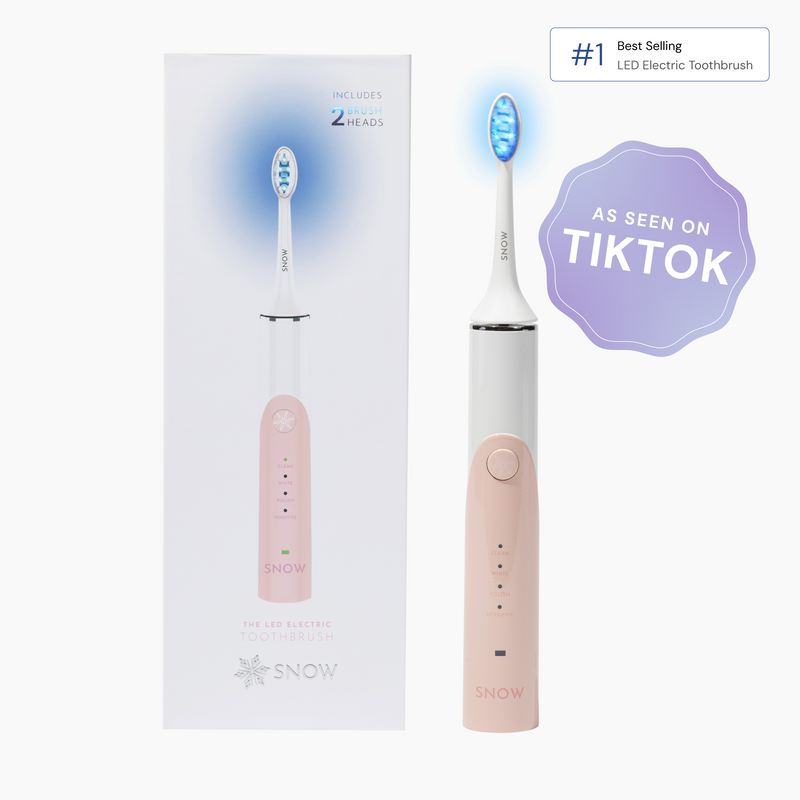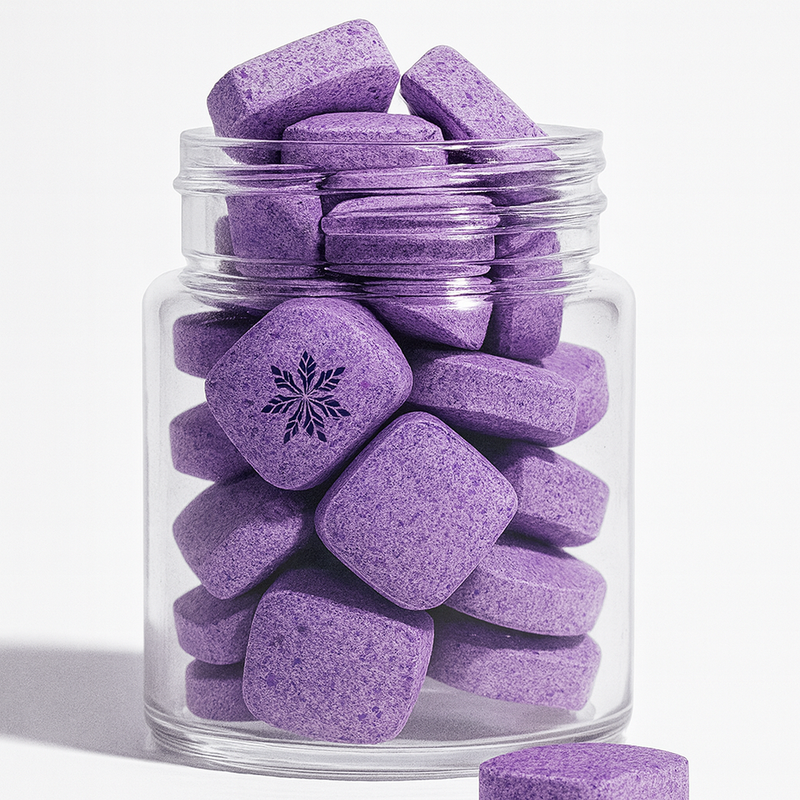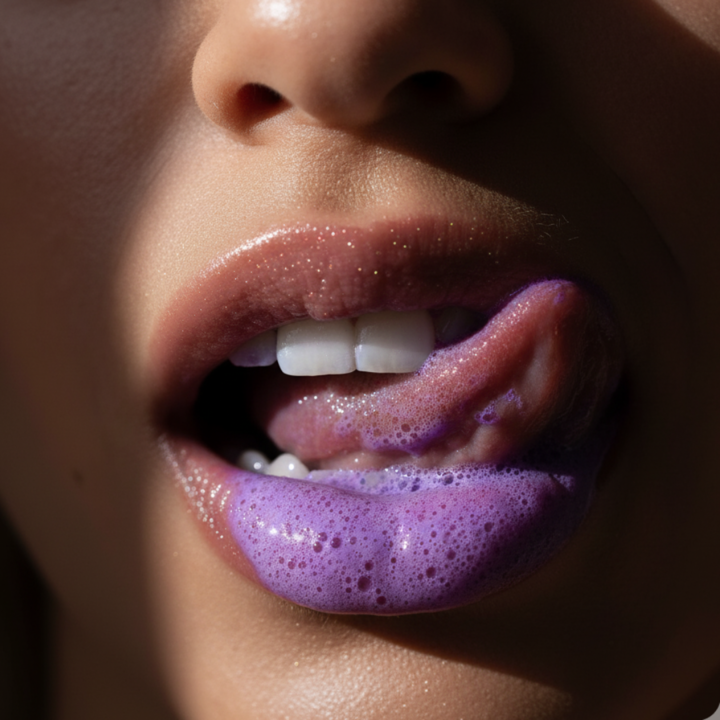Can you use whitening toothpaste with braces? Absolutely! Keeping your teeth white with braces is possible with the right care and products.
In this article, we'll investigate the use of whitening toothpaste with braces and delve into effective oral hygiene practices like brushing, flossing, and using a straw. We'll also discuss drinking water between coffees and minimizing sugar intake.
To finish, we'll examine why your teeth may not be white and the optimal timing for whitening treatments with braces.
Without further delay, here is what you need to know.
What this article covers:- Can I Use Whitening Toothpaste with Braces?
- How to Keep Your Teeth White with Braces
- Why Aren't My Teeth White?
- When Should I Whiten My Teeth If I Have Braces?
Can I Use Whitening Toothpaste with Braces?
Maintaining a bright smile with braces is a common concern, and using whitening toothpaste is one practical solution.
Our teeth whitening toothpaste is effective yet gentle, making it suitable for those undergoing orthodontic treatment. Using whitening toothpaste with braces can prevent the buildup of stains around the brackets.
SNOW's Whitening Toothpaste contains safe and effective ingredients that work without causing excessive abrasion or enamel erosion, which is essential for long-term dental health.
For intensive whitening after braces, the teeth whitening kit offers a comprehensive at-home solution. This kit includes an LED accelerating light, three whitening wands (one extra-strength), and a desensitizing serum to minimize sensitivity.
It promises visible results in just a few uses, with significant whitening achieved over 21 days.
How to Keep Your Teeth White with Braces
Based on our observations, maintaining white teeth while wearing braces can be challenging, but with the right practices, you can keep a bright smile. Here are some effective methods to help keep your teeth white and healthy during this period.
Brushing
One of the most important steps in keeping your teeth white with braces is proper brushing. Use a soft-bristled toothbrush to remove plaque and surface stains.

Brush at least twice a day, and pay special attention to areas around the brackets and wires.
An electric toothbrush can be particularly effective at removing plaque from hard-to-reach areas around your braces.
Brushing should be thorough and gentle to avoid damaging your braces and gums.Hold the toothbrush at a 45-degree angle to the gum line and use small, circular motions to make sure that you clean thoroughly.
Don't forget to brush your tongue to remove bacteria and freshen your breath.
Can kids use whitening toothpaste? While it's generally safe for children to use whitening toothpaste, it's best to consult with a dentist first, especially if your child has braces.
Flossing
Flossing is another crucial step in maintaining oral hygiene with braces. It helps remove food particles and plaque from between your teeth and under the gum line, which can be difficult to reach with a toothbrush alone.
Using a floss threader or a water flosser can make this process easier and more effective. We recommend flossing at least once a day to maintain optimal oral health.
Our research indicates that, for those with braces, water flossers are helpful, as they can navigate around the brackets and wires more easily than traditional floss.
Use A Straw
Using a straw when drinking beverages that can stain your teeth, like coffee, tea, and soda, can reduce the contact these liquids have with your teeth. This simple habit can help prevent new stains from forming on your teeth while you have braces.
Teeth Whitening Strips
For on-the-go whitening, Snow's Magic teeth whitening strips are an excellent choice. These strips are designed to fit securely over your teeth, delivering professional-grade whitening power.
Infused with hydrogen peroxide, they effectively lift stains from coffee, wine, and other daily habits.

Gentle enough for daily use, these strips ensure even whitening across your smile, with users typically seeing results after just a few applications.
Drink Water Between Coffees
Drinking water between coffees is a simple way to maintain oral hygiene, especially when you have braces. Coffee, while delicious and energizing, can contribute to staining your teeth over time.
Water helps reduce acidity in your mouth, which can contribute to staining and enamel erosion. Rinsing your mouth with water after consuming staining beverages can further protect your teeth.
Minimize Sugar Intake
Foods and beverages high in sugar can lead to plaque buildup and cavities, which can complicate orthodontic treatment.
By reducing your sugar consumption, you can decrease the risk of tooth decay and gum disease, helping to keep your teeth and braces clean and healthy.
At SNOW, we recommend a balanced diet that limits sugary snacks and drinks.
Opt for healthier alternatives like fruits, vegetables, and whole grains.
Can I mix baking soda with my toothpaste? While some people mix baking soda with toothpaste for extra whitening power, it's important to use caution, as it can be abrasive on enamel.
To complement your whitening routine, SNOW's Arctic Frost teeth whitening mouthwash offers a multi-functional solution. Its alcohol-free formula whitens teeth, freshens breath, and soothes gums.
Why Aren't My Teeth White?
Our findings show that there are several reasons why your teeth may not be as white as you would like.
- Natural factors like genetics play a big role in the color of your teeth. Some people naturally have teeth that are more yellow or gray than others.
- Aging also causes the enamel to thin, exposing the yellowish dentin underneath, which can make teeth appear darker over time.
- Consuming certain foods and beverages like coffee, tea, red wine, and soda can stain your teeth.
- Smoking and using tobacco products can lead to brownish stains.
- Poor oral hygiene, leading to plaque and tartar buildup, can further contribute to discoloration.
- Medications, dental trauma, and some health conditions can also affect the color of your teeth.
When Should I Whiten My Teeth If I Have Braces?
Whitening your teeth while wearing braces can be tricky, but timing is key. It is generally recommended to wait until after your braces are removed to start any intensive whitening treatments.
Whitening products cannot reach the areas of your teeth covered by brackets and wires, which can lead to uneven coloring once the braces are taken off.
Can I use fluoride toothpaste after whitening strips? Yes, it's safe and beneficial to use fluoride toothpaste after using whitening strips, as it helps strengthen enamel and prevent sensitivity.
For those looking for a natural alternative, our teeth whitening powder is a great option. Made with activated charcoal, it lifts stains and detoxifies the mouth.
Conclusion
Maintaining a white smile with braces is achievable with the right strategies and products. Adopting proper oral hygiene practices like thorough brushing, regular flossing, and drinking water between meals can significantly contribute to keeping your teeth bright.
We have explored the importance of reducing sugar intake and the benefits of our at-home treatments. Understanding the reasons behind tooth discoloration and knowing the optimal timing for whitening treatments with braces are crucial for achieving the best results.
Visit SNOW's website today to discover the perfect whitening solution for you.
If you want to learn more, why not check out these articles below:
- Can Toothpaste Cause Dry Mouth
- Can Toothpaste Cause Dry Lips
- Does Whitening Toothpaste Work
- How Long Does a Tube of Toothpaste Last
- Does Toothpaste Kill Bacteria
- How Long Does It Take for Whitening Toothpaste to Work?
- How Does Sensitive Toothpaste Work?
- What Does Fluoride Do in Toothpaste?
- How Does Whitening Toothpaste Work?
- Does Fluoride Toothpaste Whiten Teeth
- Does Purple Toothpaste Work on Crowns?
- What Toothpaste Whitens Teeth?
- What Happens If You Use Too Much Toothpaste?
- What to Look for in Toothpaste
- Best Toothpaste for Sensitive Teeth

















































